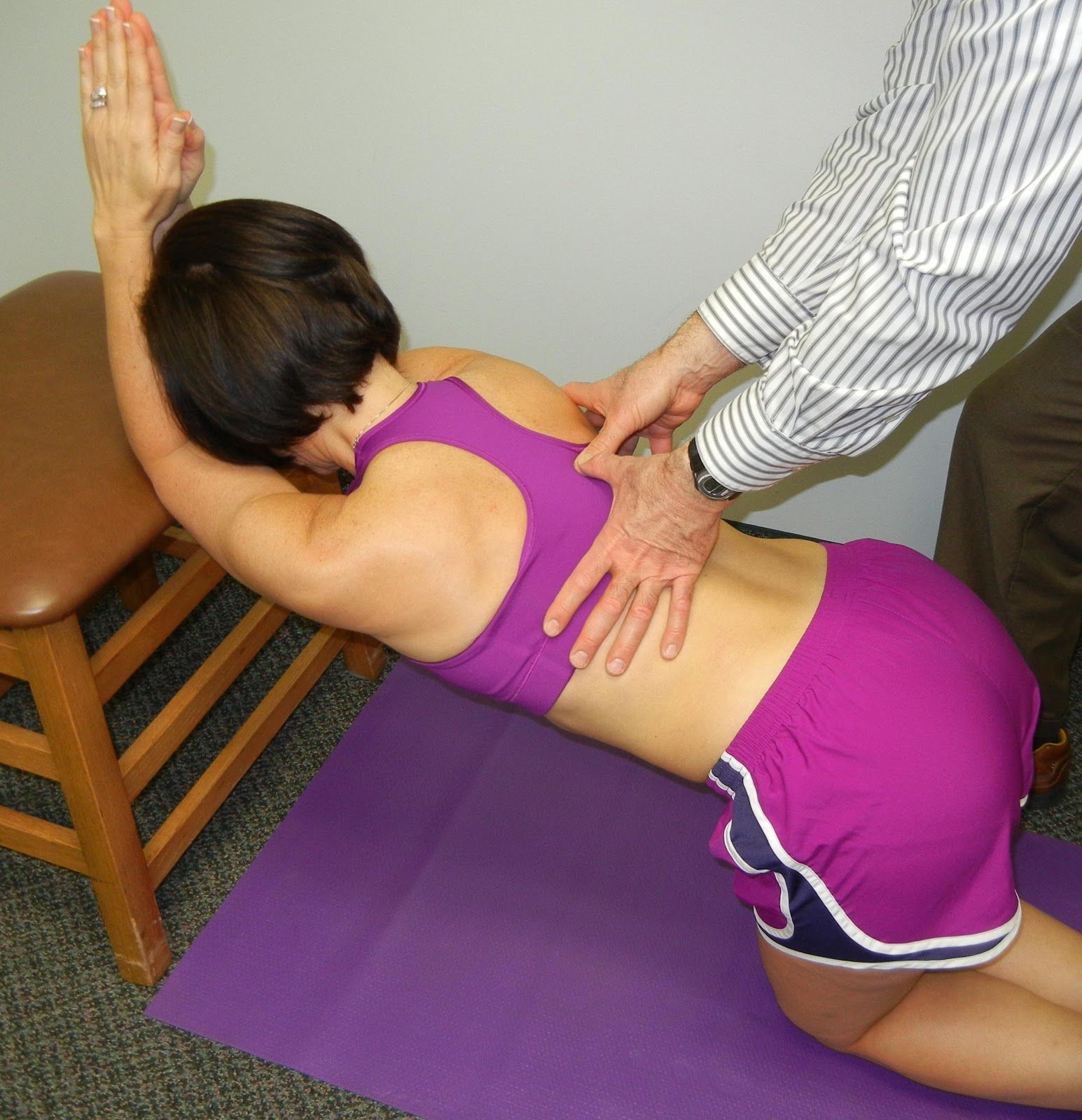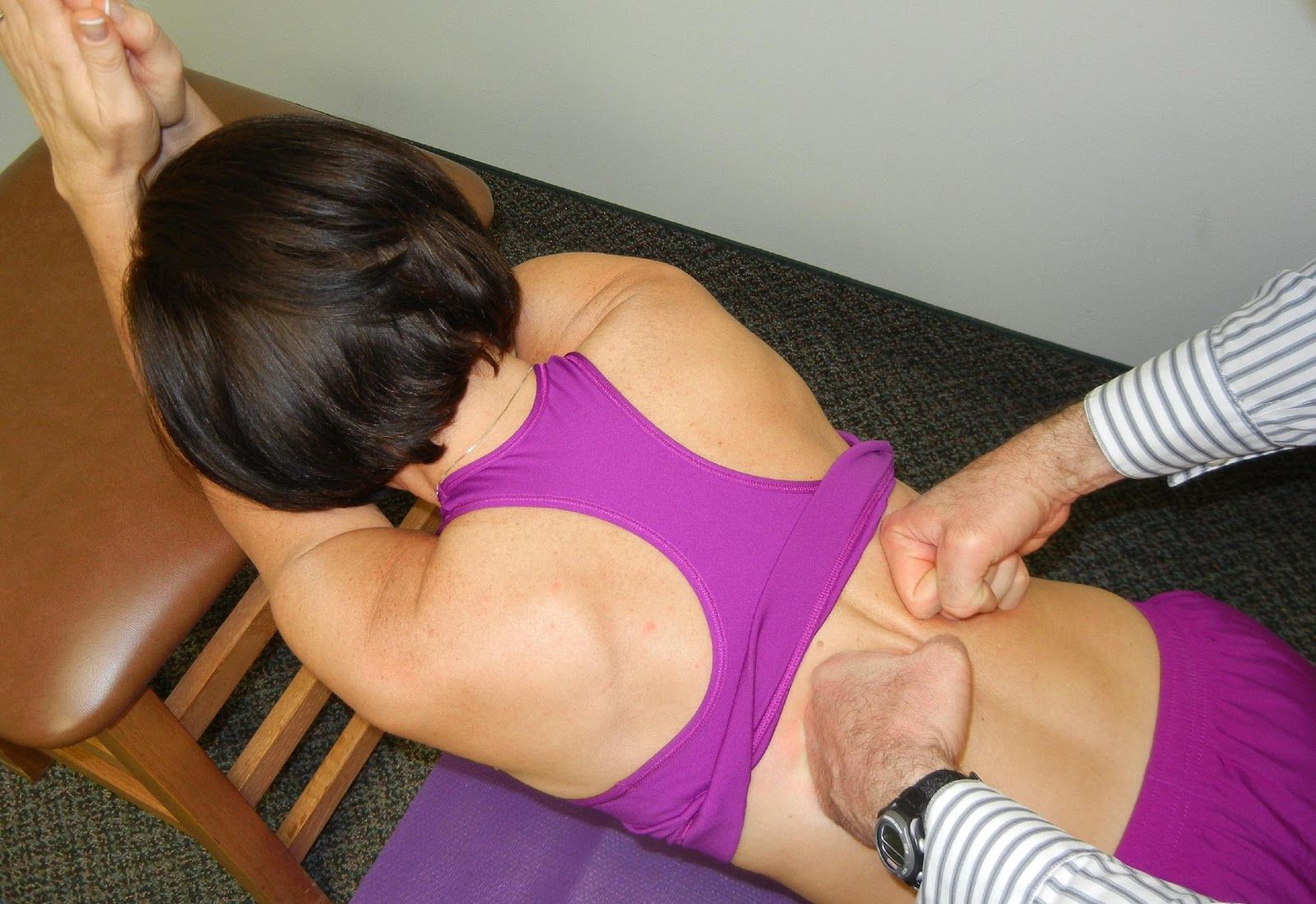Mobilization of the Thoracic Spine in the Lat Dorsi Stretch Position
- In kneeling, have the patient place their elbows on top of a bench or chair and walk their knees back until their hips are flexed to approximately 90º.
- Their hands and forearms should be together with the head resting on their upper arms.
- Ask the patient to press the inner border of their arms together to separate the shoulder blades in back.
- The patient is instructed to drop their chest toward the floor as much as possible, then perform a posterior tilt (12:00) of the pelvis without lifting up the chest. They should feel a good stretch along the sides, around their shoulder blades.
- The therapist can then apply a posterior to anterior mobilization glide on the spinous process or transverse processes of any segment that appears to be restricted for extension while the patient maintains the stretch or the therapist can perform a myofascial stretch using the fists to draw the soft tissues towards the midline.
- The goal is to increase extension in the mid to lower thoracic spine before instructing the patient in self-stretching of the latissimus dorsi.
Remember that the lower trapezius not only contributes to mobility of the shoulder, but is also a thoracic spinal extensor. Consequently studies have found that both mobilization and manipulation techniques to increase extension in the thoracic spine result in an increase in lower trapezius muscle strength, at least in the short term (Liebler et al., 2001 and Cleland et al., 2004).


